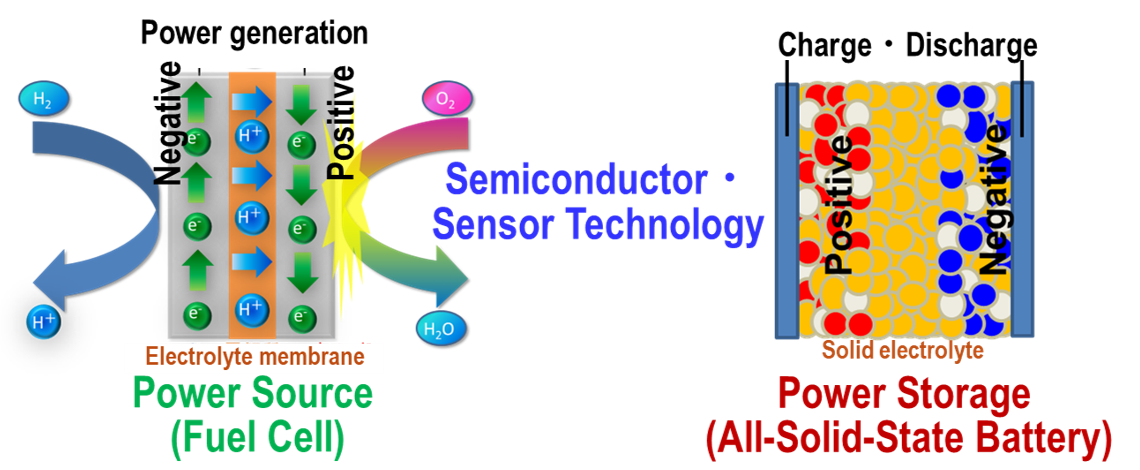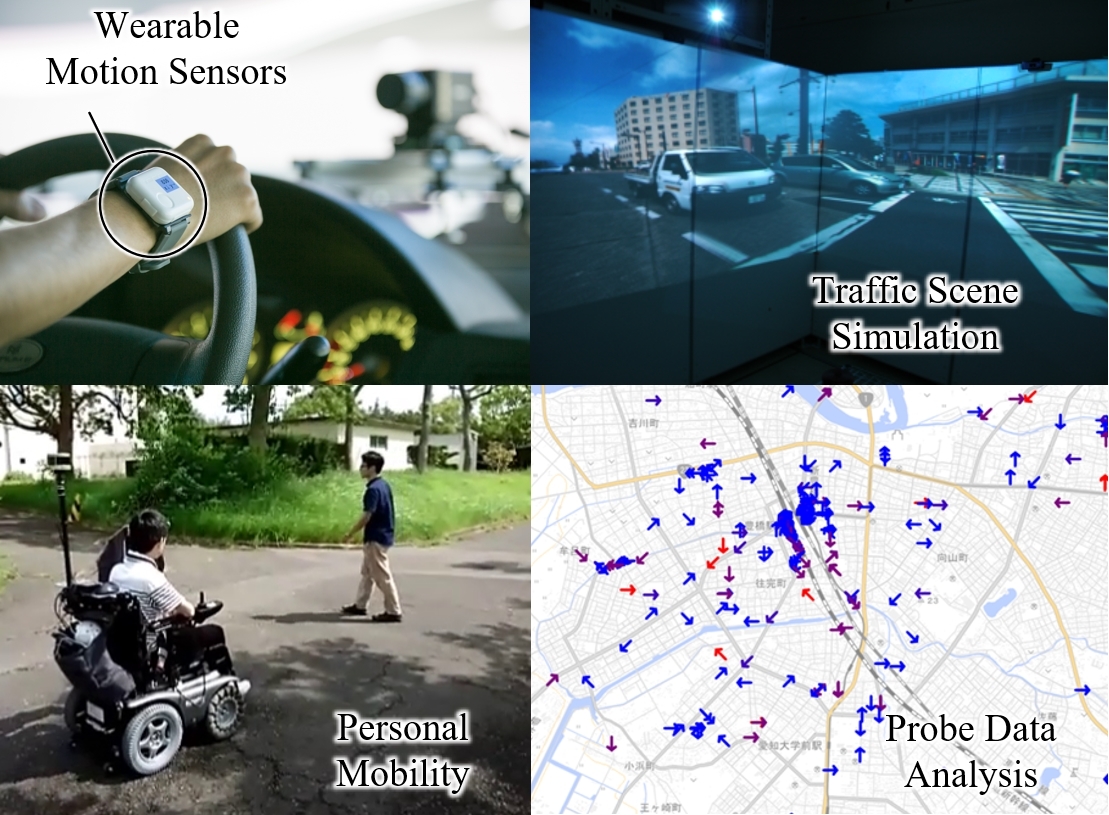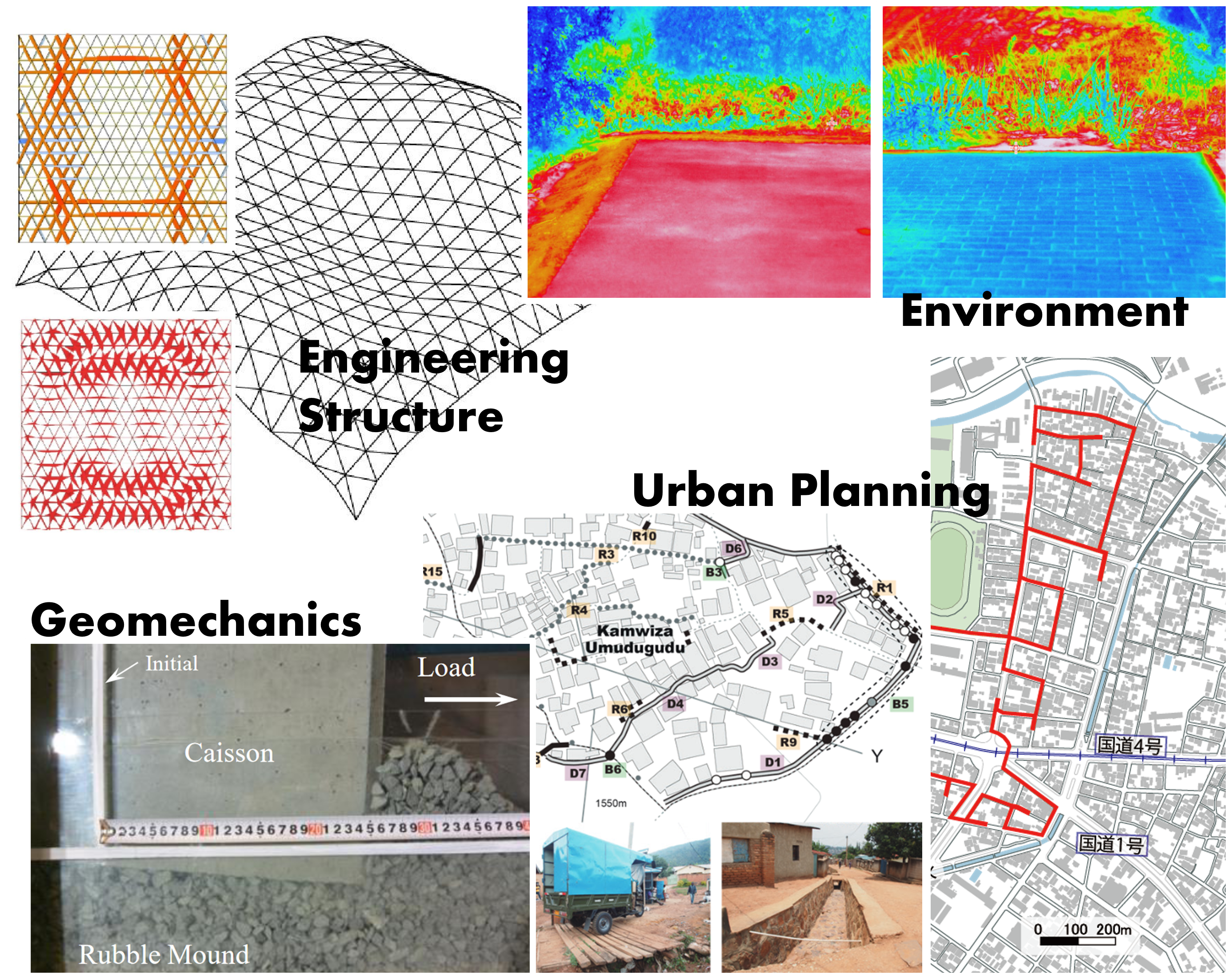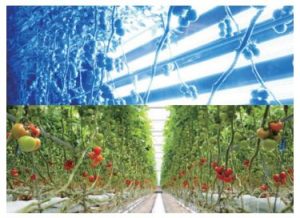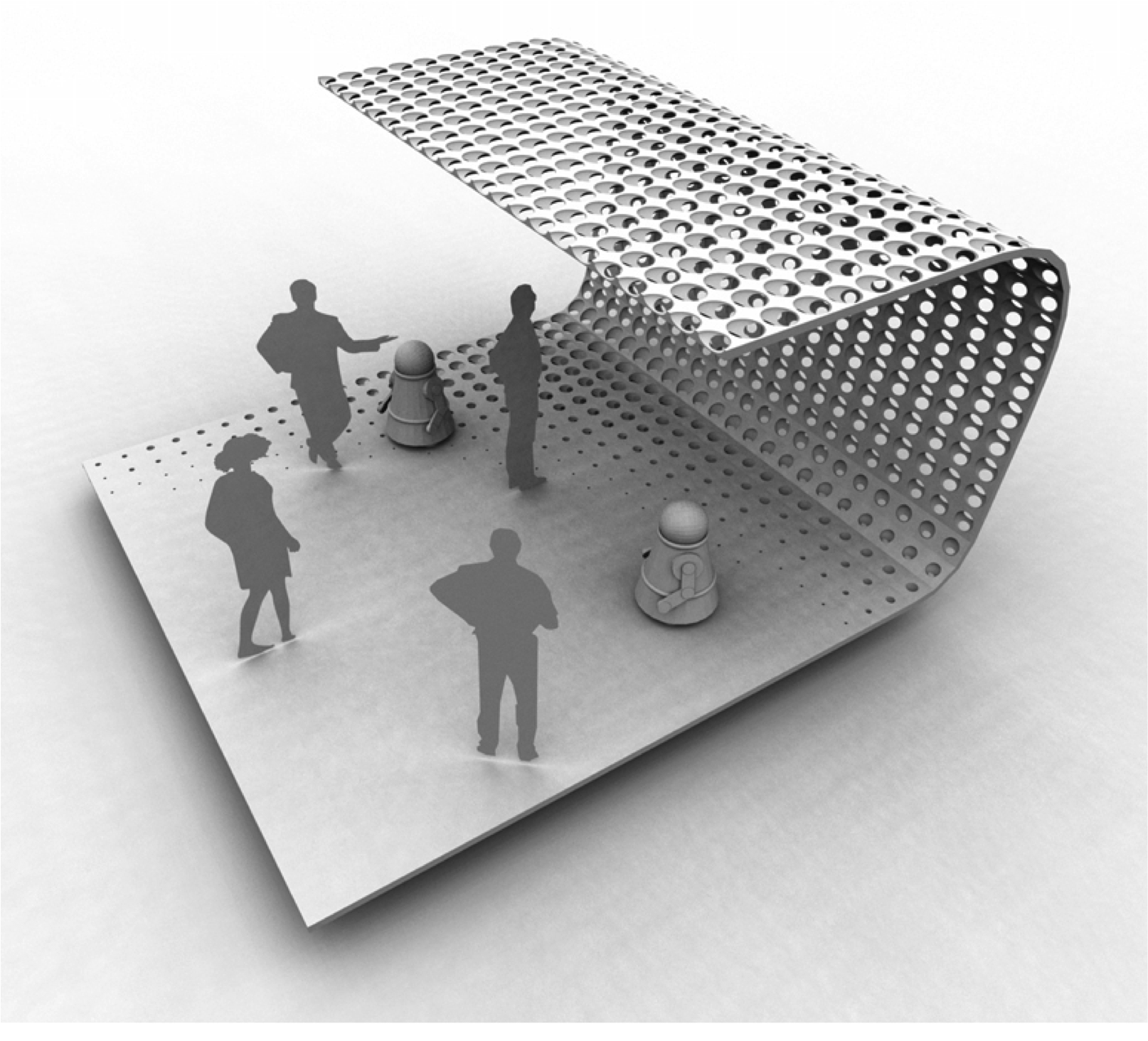This is a research base aimed at exploration and application of technical science, that is, interdisciplinary research between research on innovative electronic technologies such as smart sensing and photonics information devices, and advanced application fields (e.g., robotics, information and communications, life sciences, agricultural engineering, environment, and disaster prevention).
[Advanced Technology Research Division]
Actuation and Sensing group
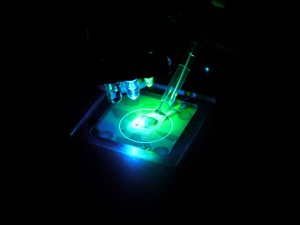 Based on globally recognized our fabrication technologies of integrated circuits, MEMS, and sensors, we have successfully developed a diverse range of smart microdevices. Additionally, by integrating compound semiconductors and other materials, we are advancing research and development in cutting-edge devices within the fields of sensor and MEMS devices – essential components in the IoT society. Through continuous development of our device technologies and collaboration with universities and research institutes worldwide, our goal is to pioneer innovative knowledge in semiconductor and sensor device technologies for the next generation.
Based on globally recognized our fabrication technologies of integrated circuits, MEMS, and sensors, we have successfully developed a diverse range of smart microdevices. Additionally, by integrating compound semiconductors and other materials, we are advancing research and development in cutting-edge devices within the fields of sensor and MEMS devices – essential components in the IoT society. Through continuous development of our device technologies and collaboration with universities and research institutes worldwide, our goal is to pioneer innovative knowledge in semiconductor and sensor device technologies for the next generation.
Neural interface
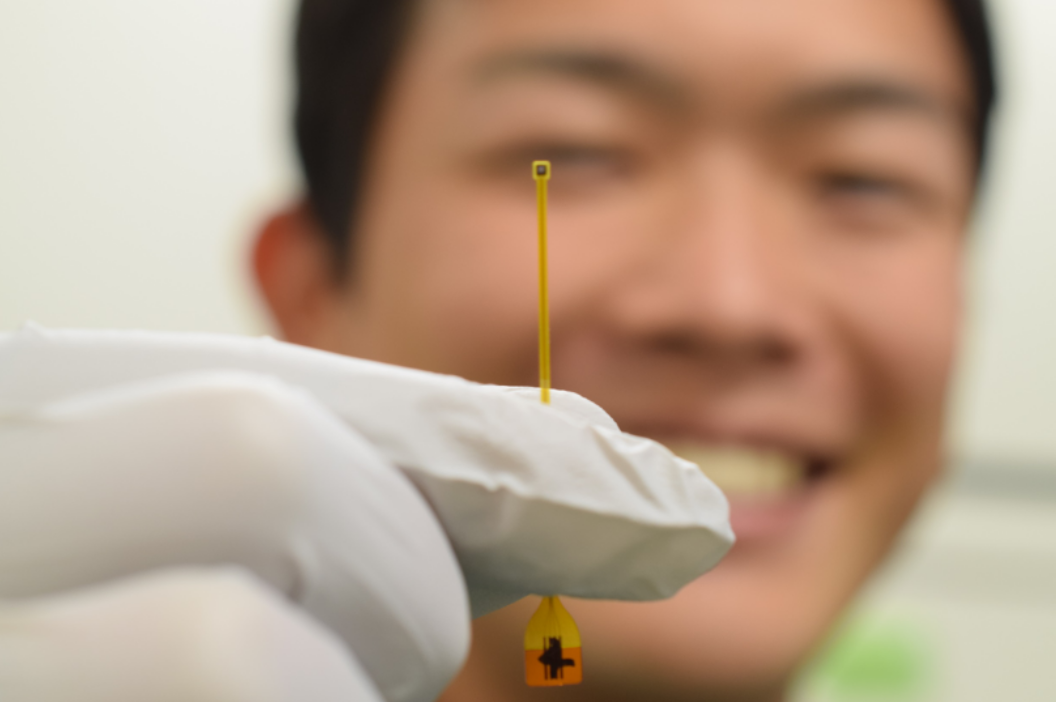
Electronics technology that connects with the brain: We are conducting research on “neural interfaces”, which are electronics for achieving this technology from both semiconductor engineering, MEMS, and nanotechnology as well as applied electrophysiology and neuroscience. This research contributes not only to the field of brain-machine interface (BMI) research, which connects machines and computers to the brain but also to neuroscience and brain therapy.
Multimodal sensor for agriculture
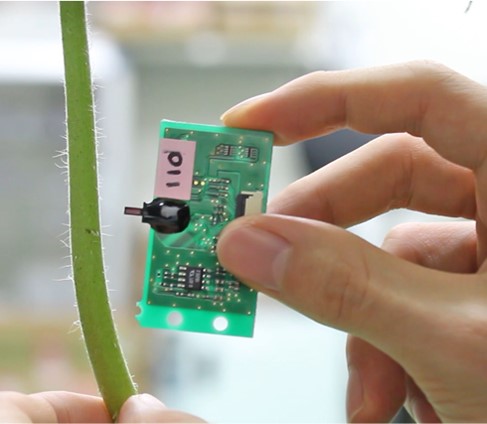
We are examining sensing devices and systems that can conduct multimodal measurements and visualizations of nutrients, water contents, and distributions of various ions within plants. This is expected to enable the accurate determination of information that influences plant growth, leading to the elucidation of growth mechanisms, and increased yields in smart agriculture.
Machine learning-based multimodal sensing
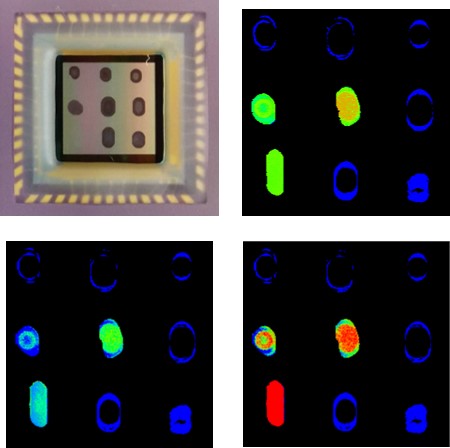
Currently, we are working on a new sensing approach in which multiple items are measured by combining multiple sensors with different detection characteristics and using machine learning technology for data analysis to achieve multimodal sensing. We are advancing research on the simultaneous measurement of multiple ions and multiple gases, and the realization of odor sensing through the fusion of image output-type sensors formed using CMOS integrated circuit technologies with AI technologies. We are also looking into the expansion of this research into the agriculture, nursing / medical care, and bioscience fields.
Multi-point illumination-based single-cell screening
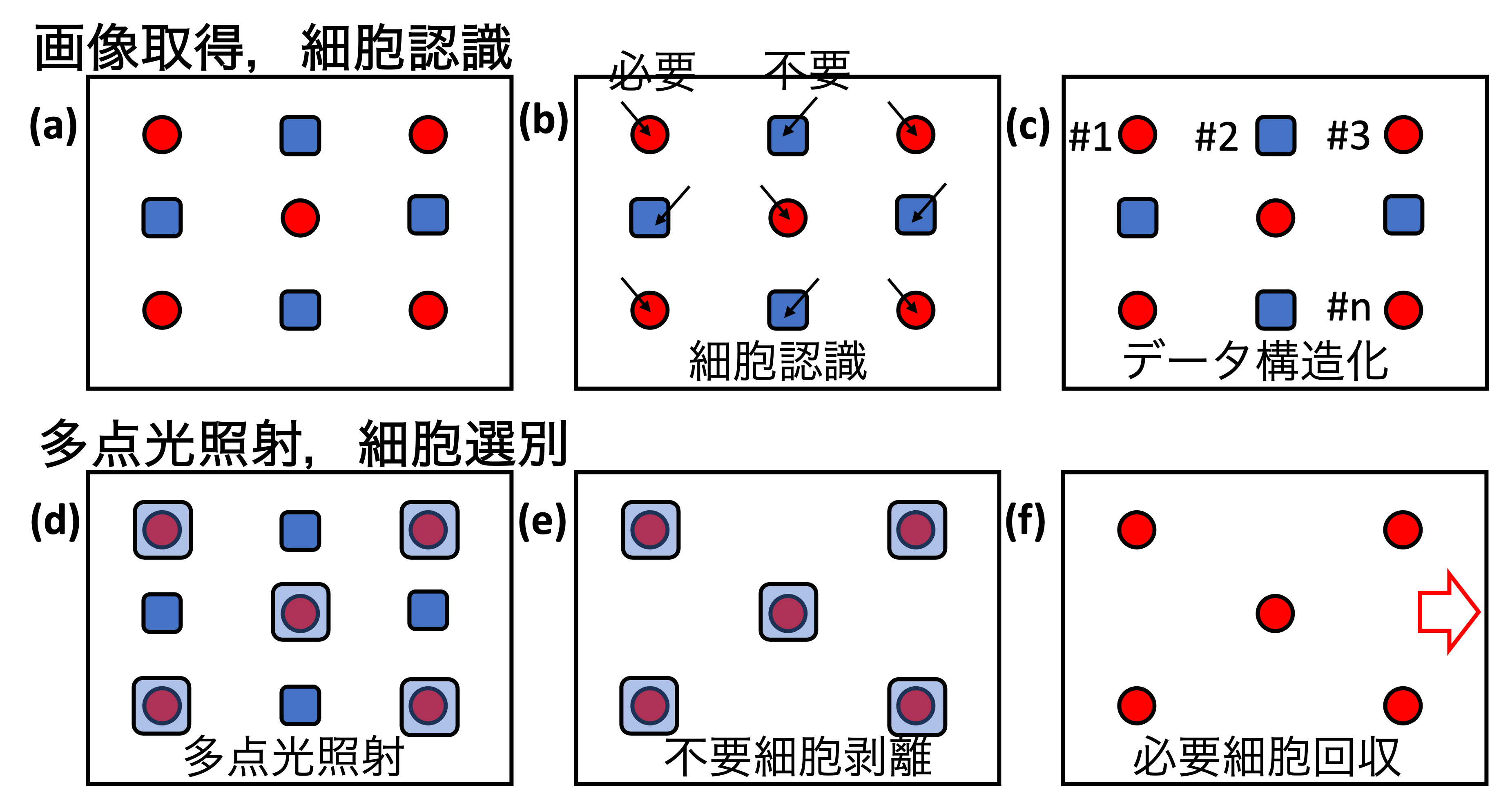
A diverse array of cells exists, and their precise separation is crucial for both treatment and research. While conventional cell sorters excel at processing large volumes, they rely solely on momentary snapshots, hindering the isolation of cells that exhibit dynamic changes over time. To address this, time-lapse microscopy offers the ability to track these dynamic cells based on their behavior captured in a series of images. However, traditional cell pickup methods suffer from low efficiency, limiting the practical application of this approach. Here, we present a novel solution: efficient cell isolation through multipoint light-induced gel encapsulation, enabled by a MEMS mirror array. This technology precisely directs beams of light, polymerizing the gel surrounding the target cells and facilitating their isolation with exceptional accuracy and speed.
MEMS optical interferometric biosensor for multibiomarker detection
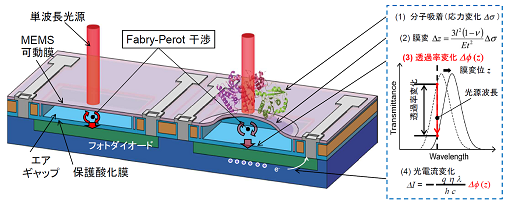
The development of sensor devices that measure chemical quantities such as smell and biological information, which are the objects of sensing in our daily lives, has lagged behind that of physical sensors. This laboratory is researching MEMS technology for chemical biosensors that measure the amount of adsorbed chemical substances and biomolecules, focusing on the intermolecular interactions between adsorbed molecules and their mass.
Passive terahertz optical nanoscopy using superconducting sensors
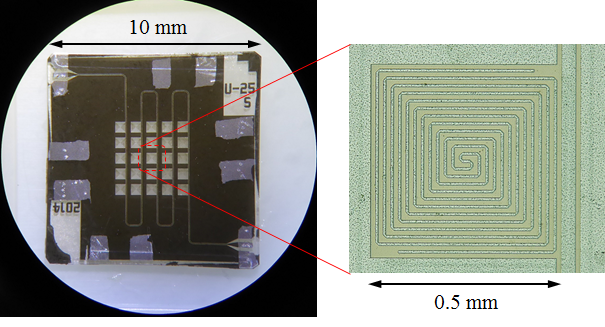
Terahertz light is an unexplored field of optics that stands in the gap between technological progress toward shorter wavelength radio wave resources and longer wavelength light wave resources. The purpose of this research is the creation of near-field microscopy technology that operates in the terahertz band (terahertz optical nanoscopy) to propose and establish new analytical methods in the field of basic physical properties of soft materials such as polymers and biomaterials. Specifically, we are constructing a system in which a sharp metal probe is brought close to the sample surface, and the terahertz light that is spontaneously emitted from that local area is modulated using a Fourier transform spectrometer, after which it is detected using a high-sensitivity superconducting sensor (MKID, right figure) array. We hope that achieving this microspectroscopic imaging system will enable the elucidation of the origin and structural control of absorption spectra that are unique to various functional polymers and biomaterials (fingerprint spectra), as well as the opening up of a new future for physical property research such as the development of new functions.
[Advanced Technology Research Division]
Human brain information group(Human brain and Robotics)
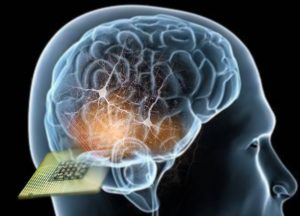
We aim to utilize silicon probes and ion image sensors developed at IRES² to advance research related to reading and controlling brain information, as well as develop innovative neural devices based on the needs in the neuroscience field. We will also measure and control biological signals centered on human brain waves to advance research for elucidating the neural networks involved in human cognitive processing and apply the obtained knowledge to brain-machine interfaces (BMI) and neuromarketing.
Elucidating the neurocognitive mechanism of Team Flow
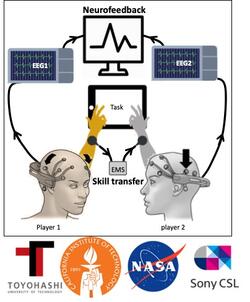
The flow state, or getting into the zone, is a known phenomenon in positive psychology that develops when there is a balance between the skills of the individual and the challenge of the task given clear goals and immediate feedback. “Team flow” occurs when a group falls into the flow while sharing a common goal towards task completion as in sports teams, music ensembles, dance squads, or teams in video gameplay. Although individual flow is known to have a positive effect on several life experiences, team flow shows enhanced positive effects, including enhanced creativity, productivity, and emotions. As team dynamics depends on coordinated actions, it requires coordinated brains. Hyper-scanning, recording brain activities of the interacting individuals simultaneously, studies revealed consistent findings of interbrains synchronization or brain-to-brain coupling in social tasks such as interbody synchronization, speech coordination, music production and dancers, student-teacher interactions, and enhanced creativity in cooperative social task. A neural model for team flow. We recently established a team flow experimental setup in the lab while hyper-scanning using electroencephalograms (EEG)(Figure, upper panel). We have developed a methodology to distinguish the flow brain state from the non-flow state based on auditoryevoked potential (AEP) as a measure of the intense selective attention to the task. Also, we have isolated neural markers of “team flow” including higher inter-brain synchrony and a unique brain integrated information network (Figure, lower panel) as compared to “team, no flow” and “no team, flow” experiences. Selected publications and works
Robot system that helps realize a prosperous society
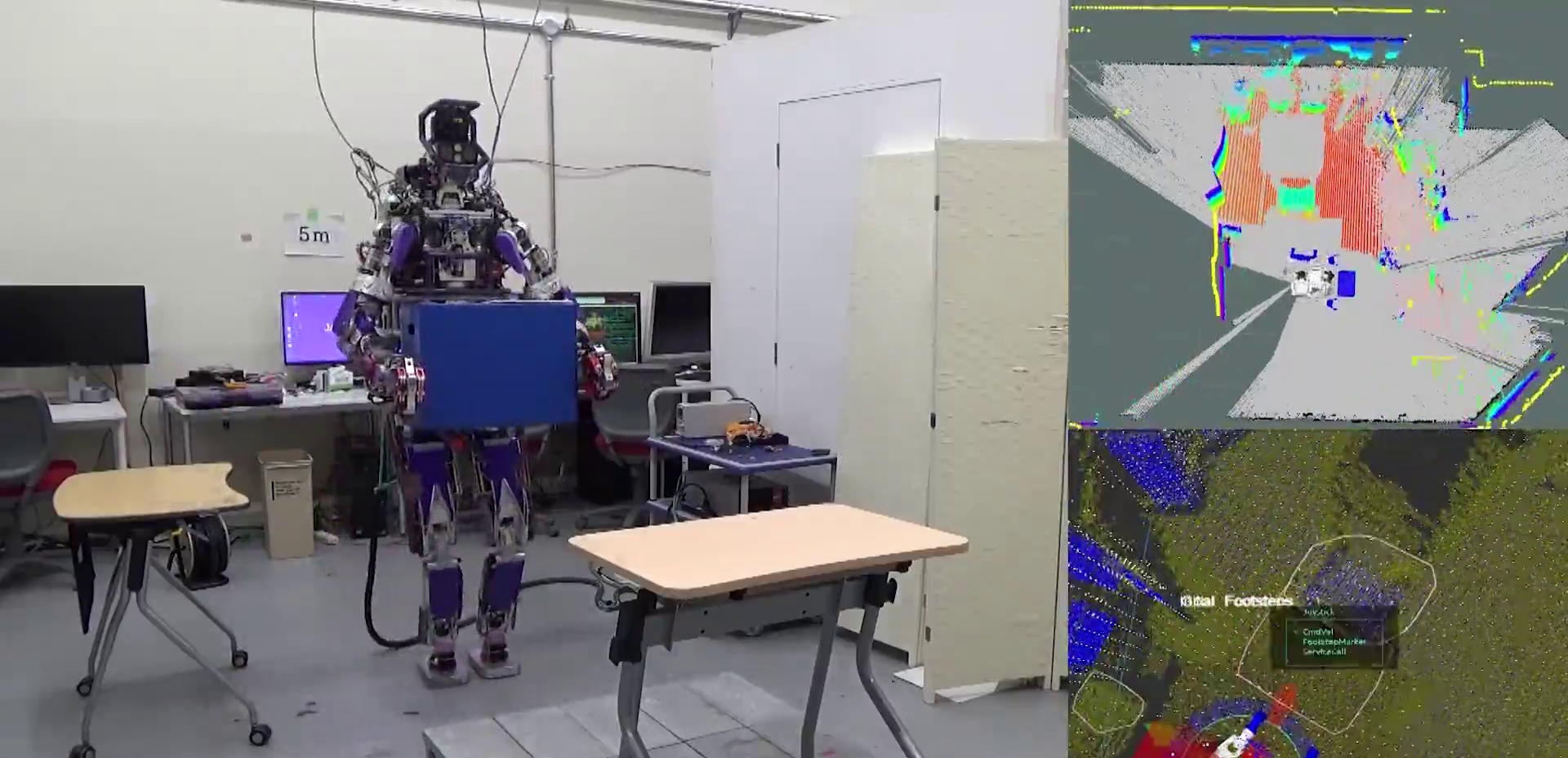
There are many issues that must be resolved for robots to be active in the actual society. We are conducting research and development to solve these issues by creating a system that combines the information theory and mechatronics. Research and development focuses particularly on pioneering fields where complex robots such as humanoid robots can work effectively, methods for using new robots, and methods for creating new robots.
Simulation of Various Hearing Levels to Understand Hearing
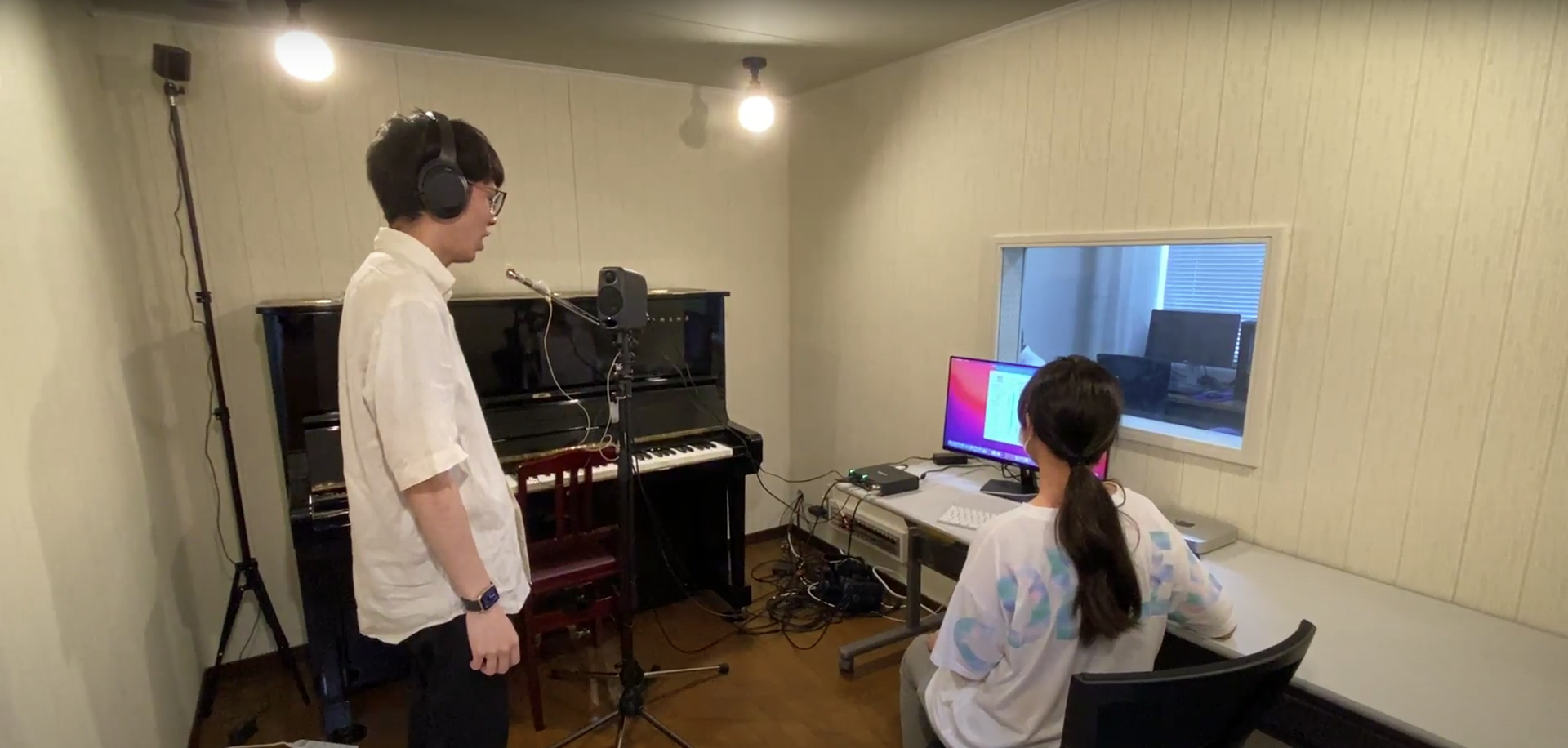
The population of people with age-related hearing loss continues to grow as the population ages. Understanding how hearing loss changes the hearing of the sounds in our daily lives is essential to maintaining the quality of communication through sound.
Using simulated hearing loss based on a computational model of the auditory periphery, we aim to provide a highly accurate simulation of hearing in people with different hearing levels. The simulation estimates the sounds heard by individuals based on their actual hearing levels (thresholds), comparing these estimates with the hearing experiences of real elderly individuals. This comparative analysis enhances the precision of the simulation. Additionally, our aim is to identify the specific location of dysfunction within the auditory system based on their hearing profiles.
We will explore hearing not only in terms of speech intelligibility but also in terms of a wide range of sounds in communication, such as emotion in speech and characteristics of the speaker.
[Advanced Technology Research Division]
Advanced Life Science group
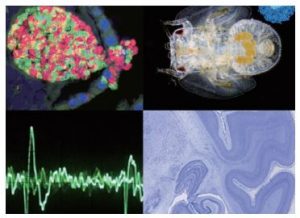
We study life science from biochemistry, pharmacology, genes, organisms, neural activity, to behavior, by applying innovative devices and tools developed at IRES². To this goal, we maintain experimental areas for using rodents and primates to promote joint research. These collaborations promise to be the basis for future medical, welfare, and environmental applications.
New neuroscience research through fusion of genetic engineering and cutting-edge technology
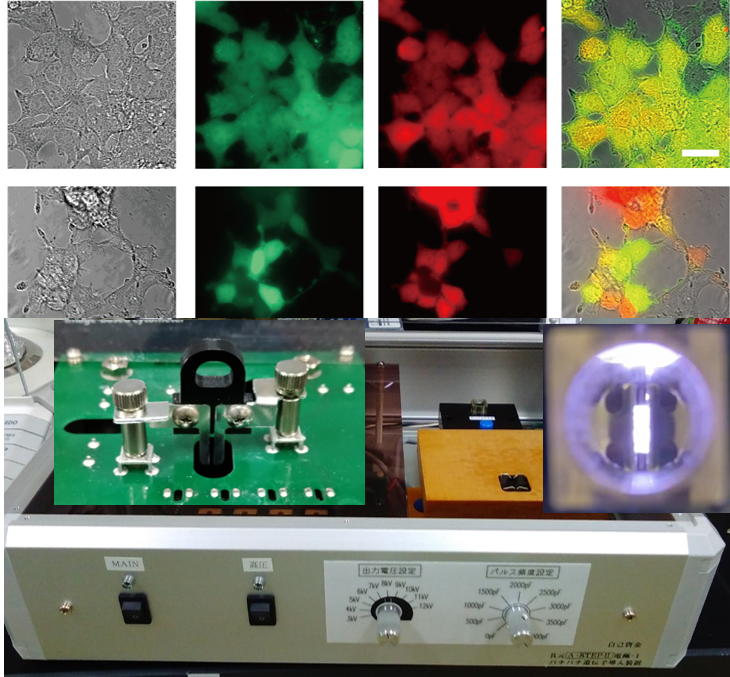
We are developing the droplet electroporation method, which is an innovative method for introducing genes into cells. This technology enables the mass production of iPS cells and various genetic modifications such as genome editing. Furthermore, the ultra-minimally invasive implantable electrode probe that we have created in-house can be implanted into the brains of disease model mice to measure the brain activity of mouse models while they are alive over a period of several months. We will deploy these experimental systems for prevention, treatment, and regenerative medicine research of neurological diseases. We will also apply this method to basic research on circadian rhythms, which are controlled by the body’s daily biological clock, as well as chronopharmacology research.
Interdisciplinary research of neural electrode development and neuroscience

We are conducting animal experiments (mice, monkeys) at the IRES²-3 “Life Science Laboratory” with the aim of understanding the neural basis of sensory-driven behaviors. The Toyohashi probe, a novel neural electrode of very fine needle for neuronal measurements, is developped and examined their feasibility.
Development of new organic synthetic reactions and their application to the development of functional materials

Our main themes are 1) development of new high-performance optically active catalysts, 2) asymmetric synthesis of chiral halogen compounds, 3) cleavage reactions of carbon-halogen bonds, and 4) high rate synthesis of chiral pharmaceutical and agrochemical products, challenging to develop unique reactions that were previously difficult to achieve or based on novel ideas.
[Advanced Technology Research Division]
Next-generation energy device group
Devices that can create, store and transport energy efficiently and safely are required to build a carbon-circulating society aimed at preventing global warming. In the field of next-generation energy devices, basic research on energy-related next-generation ionics devices such as hydrogen production, fuel cells, all-solid-state batteries, metal-air batteries, photovoltaics and supercapacitors will be performed in collaboration with the cutting-edge semiconductor and sensor technologies being researched and developed at IRES². We will contribute to the realization of a sustainable society with next-generation energy devices with semiconductors and sensors.
[Social Application and Development Division]
Future mobility and society group
The Future Mobility and Society Group aims to create a secure and safe transportation system using mobility and traffic management technologies as its foundation. To achieve this objective, we have been actively pursuing research and development efforts, including traffic system management through the utilization of large-scale traffic data, improving the safety and performance of vehicles and personal mobility solutions, and enhancing pedestrian safety through visual detection of potential hazards. Moreover, we intend to establish a close collaboration with the Advanced Technology Research Division to leverage new sensor and sensing technologies. Additionally, we plan to work in partnership with local communities and municipalities to seamlessly integrate these technologies into our society.
[Social Application and Development Division]
Area risk management technology group
The objective of the Safety and Security Technology Field is to integrate sensing technology into research related to architecture and cities, to promote technological research and implement the results to lead to safe and secure cities, environments, geography, and constructions. Specifically, we will integrate sensing technologies to understand the current status of cities and buildings and develop them for future planning, improve the environment for human activities and building performance and reduce environmental impact by sensing environmental conditions, and conduct implementation research on the development of advanced disaster prevention technology by integrating construction and geographic information with sensing technology.
[Social Application and Development Division]
Advanced agricultural technology group
We are developing cutting-edge agricultural production technologies using sensors and MEMS devices developed at IRES². Specifically, we are targeting environment-controlled plant production such as plant factories, and we will develop and socially implement plant diagnostic technologies (chlorophyll fluorescence, odor component, and photosynthesis / transpiration measurement) to achieve advanced cultivation and labor management based on plant biological information. We are also working closely with industry and academia in the Netherlands, which is a world leader in solar plant factory technologies, to expand plant diagnostic technologies worldwide.
[Social Application and Development Division]
Human-robot symbiosis research group
The Human-Robot Symbiosis research group has a goal of creating a society where humans can enjoy enriched lives through the collaboration of humans and robots. To achieve this vision, we are actively pursuing research and development across a range of areas, including lifestyle support and service robots, agricultural robots, advanced control systems, assistive technology, virtual and augmented reality, as well as interactive technology. In recent years, we have undertaken extensive collaborative research in partnership with academia, industry, and government, enabling us to integrate cutting-edge robotic technologies into our society. Additionally, we plan to collaborate closely with the Advanced Technology Research Division to explore the application of next-generation sensor and sensing technologies in robotics.
Endowed course
Ultra-fine metal foreign object inspection system with a perfect record
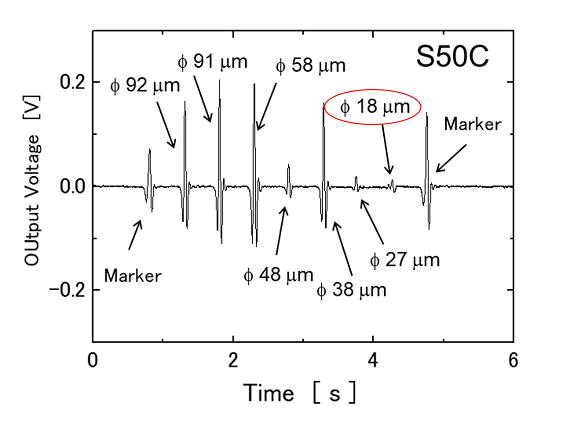
The SQUID, which is a magnetic sensor that utilizes superconducting phenomena, is capable of detecting minute magnetic fields that are one billion that of the earth’s magnetic field. SQUIDs that use high-temperature superconducting thin films can operate by cooling with liquid nitrogen (-196 ℃). Detecting minute metals on the order of several dozens of micrometers has become a challenge in the manufacturing process of Li-ion batteries; however, our prototype can detect foreign metal objects with a diameter of 18 µm at a conveyance speed of 100 m/min and product height of up to several mm. Foreign metal objects in liquids can also be detected.

